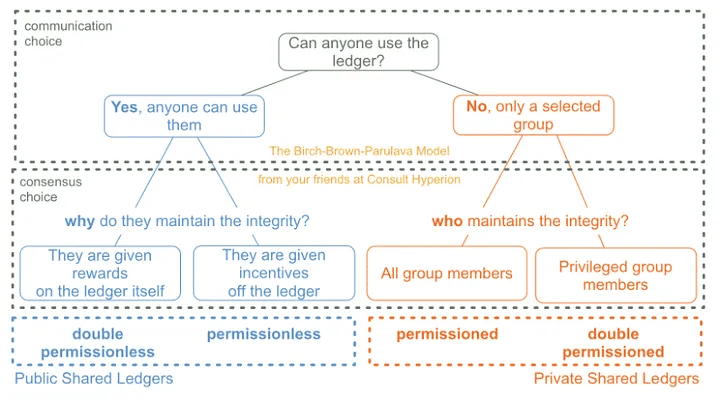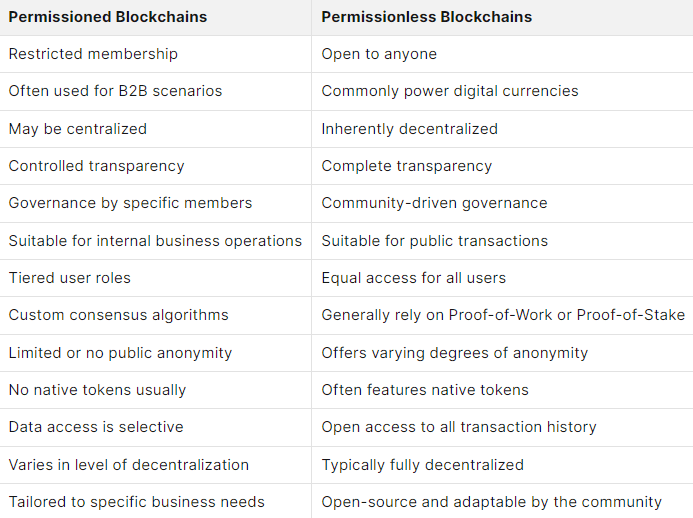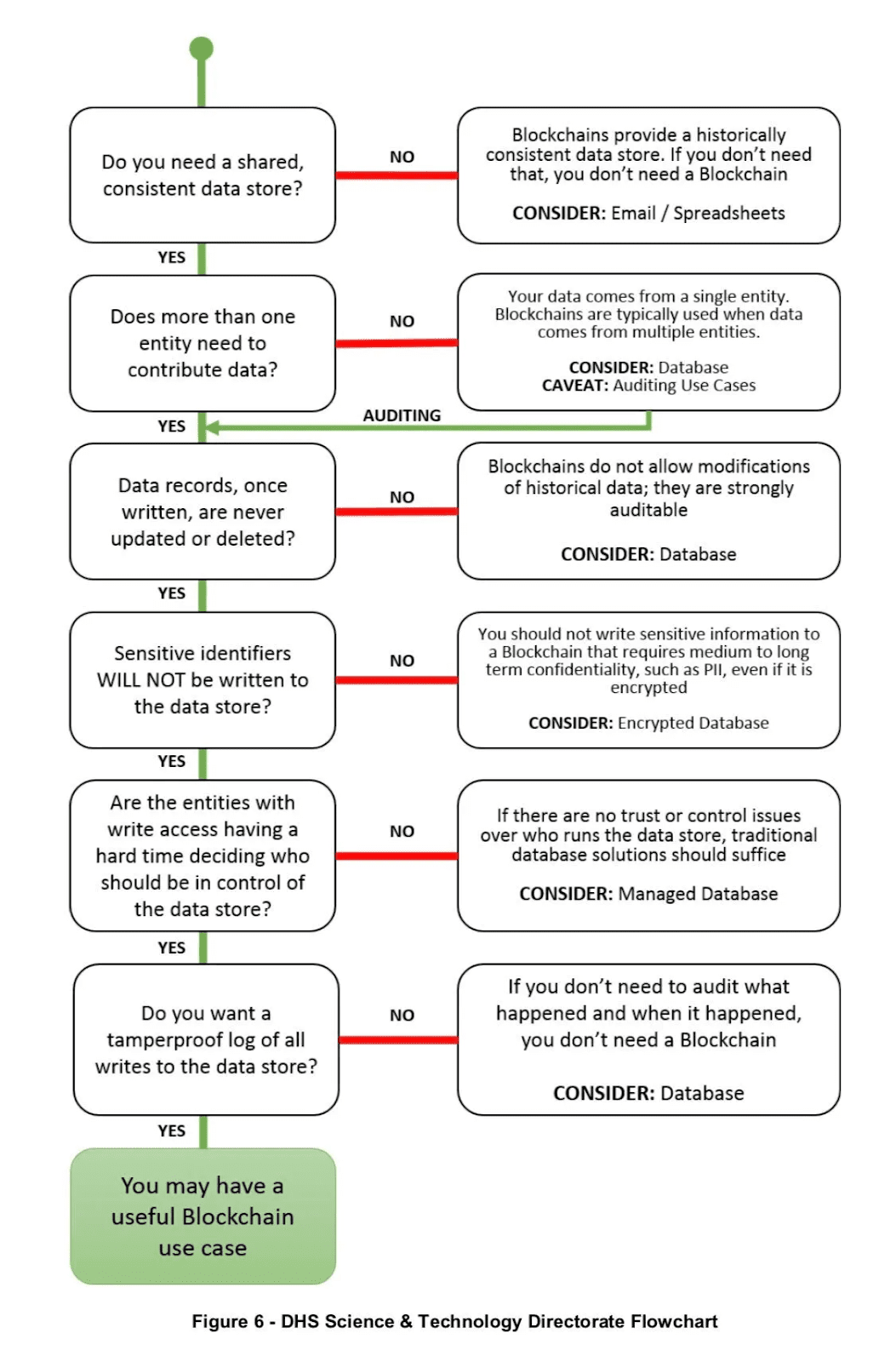When Your Business Doesn't Need Blockchain

In 2017, Karl Wüst and Arthur Gervais released their insightful research, “Do You Need a Blockchain?”. Their work simplifies a crucial question: identifying when blockchain is essential and when it's not, and what traditional IT alternatives can be used instead. Let’s delve into the criteria to assess blockchain's relevance and utility in a project.
When Is Blockchain Truly Beneficial?
Blockchain in the realm of cryptocurrency is akin to the binding of a book – it consolidates and secures everything: blocks, transaction logs, and smart contract codes. Essentially, it's a decentralized database, accessible to all participants without a single controlling owner. However, the extensive capabilities of blockchain technology are not always necessary. In some cases, it's just a part of a startup's unique feature set.
Let's explore the different types of blockchains that are practically applied
Public Permissionless Blockchain. In this type, data is available to the public, and anyone can contribute to the network by writing new blocks, becoming a node, miner, or validator. Bitcoin is a prime example of this model: its blockchain code is open-source, allowing anyone interested to contribute to its development.
The functioning of a public blockchain is upheld by its participants, who are incentivized through rewards. The entries in such a registry are openly stored, making them accessible to anyone. Major modifications are implemented either through consensus among participants or by introducing new standards such as ERC-20, ERC-721, ERC-1155, or BRC-20.
Private Permissioned Blockchain. This category includes both open and closed types. The key attribute of such a blockchain is the ability to select or appoint individuals who hold the authority to validate transactions while ensuring the network remains decentralized.
In this setup, the network data may be distributed across various users in fragments. However, the validation or refutation of these data fragments' accuracy is performed by a predetermined group or participants in the chain. Nodes and validators in these networks are often chosen from among investors, business partners, or shareholders of the company, who are actively involved in decision-making about the project's direction. The data is either shielded from external viewing or encrypted for additional security.

Decoding Blockchain Choices Using the Birch-Brown-Parulava Model / Source: chyp.com

Checklist of Differences Between Blockchain Types | Source: blockonomi.com
The Luxembourg Chamber of Commerce also leverages blockchain as a foundation for its security system. They initiated the FundDLT project, a transparent and accessible registry system, which facilitates the efficient tracking of investment distribution across different projects.
When to Consider Alternatives to Blockchain
Blockchain's main advantages lie in its transparency and immutability, making it a powerful tool for managing supply chains, especially in the agriculture sector. This technology allows for the exclusion of dishonest participants. Transparency ensures that all interested parties can track the journey of a product to the shelf in real-time. In such a blockchain system, each product, along with its essential documentation, is recorded in a block, facilitating faster inspections during loading or transfer processes. Platforms like IBM Food Trust, AgriDigital, and Agriota E-Marketplace exemplify this application.
In choosing whether to use blockchain, one should consider the specific data and functions it needs to handle. For example, diagrams from DHS S&T USA can help weed out impractical blockchain applications. According to their decision-making model, it's advisable to keep personal or sensitive data, such as login credentials or passwords, on a separate encrypted virtual machine instead of on the blockchain.

Blockchain Alternative Selection Diagram | Source: csrc.nist.gov:8202
Private blockchains can also be employed to create an order book. Decentralized Exchanges (DEX) with their own chains and trading terminals can implement limit order books. This setup enables the execution of trading orders directly between two wallets in different blockchains, with the speed of Centralized Exchanges (CEX). Platforms such as dYdX, 1inch, Oku.Trade, and the Serum protocol function in this way. Operating in a closed mode allows these platforms to implement access rights within the blockchain to prevent external interference, course manipulation, and the fabrication of orders or transactions.
Deciding When Your Business Doesn't Need Blockchain
Blockchain may not be the best solution for specialized tasks where there are already effective, non-blockchain solutions available. For example, encrypted databases are better suited for storing personal information, MYSQL can handle unstructured data more effectively, and traditional data banks are capable of storing and managing historical change records for audits, which is a task often attributed to blockchains.

Alternatives to Blockchain | Source: comptia.com
Blockchain in Low-Trust Environments
Blockchain is especially effective in networks where participants may not know one another but need mechanisms to establish a uniform level of trust. Hybrid chains exemplify this, blending the strengths of private and public blockchains. They adopt the governance model and role distribution from private blockchains and the auditability and data verification features from public blockchains.
Alternative DLTs to Blockchain
Apart from being a decentralized database with immutable records, blockchain shares these features with other Distributed Ledger Technologies (DLTs) like DAG, Holochain, Hashgraph, and Tempo (Radix). In the realm of P2P data exchange, platforms like BitTorrent and Chia have conducted experiments, using disk space as a basis for PoW mining.
Blockchain for Large Participant Groups
The use of blockchain is more justified when there are a significant number of participants. For instance, with fewer than 100 participants, creating a new blockchain may not be practical. However, as the number of participants grows, especially when their actions need verification, blockchain becomes more appropriate. Expanding networks often require multiple trusted nodes to maintain capacity. In such scenarios, established corporate blockchain frameworks like Hedera Hashgraph or Polkadot are commonly used.
Recommended

